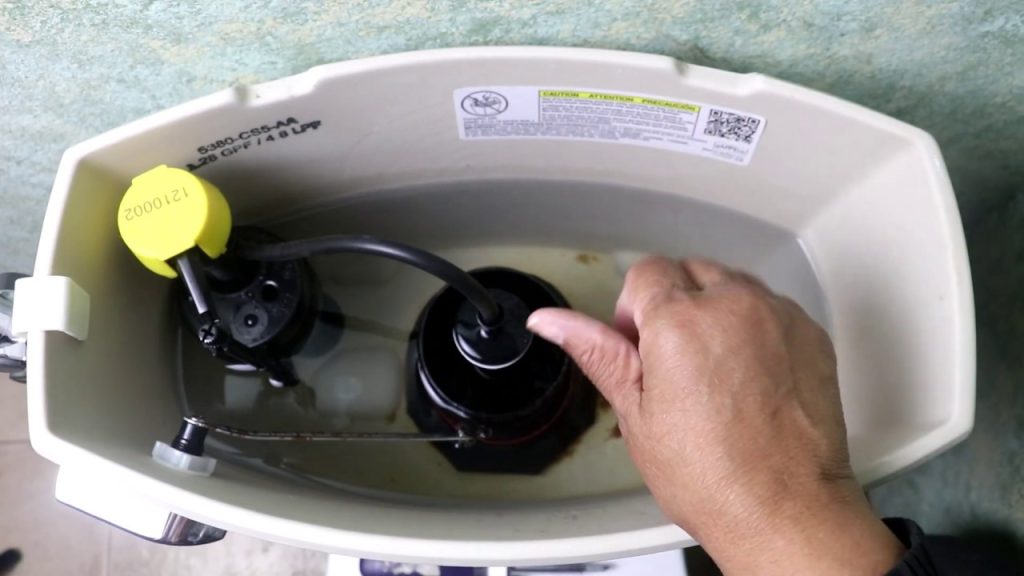A running toilet can be annoying and wasteful. Fixing it is easier than you think.
Toilets are essential in every home, but they can develop problems. A common issue is a toilet that won’t stop running. This problem can lead to higher water bills and is often due to simple issues inside the tank. Don’t worry; you don’t need to call a plumber right away.
With a few tools and some basic knowledge, you can fix a running toilet yourself. In this guide, we’ll explain the common causes and the steps to solve them. You’ll save money and help conserve water. Let’s get started on fixing that pesky toilet!

Credit: www.youtube.com
Identify The Problem
Is your toilet running continuously? Identifying the problem is the first step. A running toilet can waste a lot of water. It can also increase your water bill. Before fixing it, you need to find out what is causing it. Let’s look at some common causes and the tools you might need.
Common Causes
Several issues can cause a toilet to keep running. The most common cause is a faulty flapper. It may not be sealing properly. This allows water to leak from the tank into the bowl. Another common issue is a malfunctioning fill valve. If it is broken, it can cause the tank to overfill. A third possible cause is the float. If the float is set too high, it will cause the toilet to run. A misaligned or broken chain can also be the culprit. It may prevent the flapper from sealing correctly.
Tools Needed
You will need a few tools to fix a running toilet. A pair of pliers can help you tighten or loosen parts. A screwdriver may be necessary for adjusting screws. You may also need a replacement flapper or fill valve. Having a towel on hand is useful for cleaning up any spills. A bucket can catch any water that might leak during the repair. With these tools, you can begin to fix your running toilet.
Check The Flapper
Does your toilet keep running? It’s often due to a faulty flapper. The flapper is a rubber part inside the tank. It controls water flow from the tank to the bowl. To fix this issue, start by checking the flapper.
Inspect For Damage
First, remove the tank lid. Locate the flapper at the bottom of the tank. It’s connected to the flush handle by a chain. Carefully lift the flapper and inspect it.
- Check for cracks or tears.
- Feel if the rubber is too hard or brittle.
- Ensure the flapper seats properly on the valve.
If the flapper shows any signs of damage, it might be the cause of the running toilet.
Replace The Flapper
If the flapper is damaged, you need to replace it. Follow these simple steps:
- Turn off the water supply to the toilet.
- Flush the toilet to drain the water from the tank.
- Remove the old flapper by unhooking it from the flush handle and the overflow tube.
- Take the old flapper to a hardware store to find an exact match.
- Install the new flapper by hooking it to the flush handle and the overflow tube.
- Turn the water supply back on and test the toilet.
Make sure the new flapper seals properly. This should stop the running water. If the toilet still runs, the problem might be elsewhere.
Adjust The Float
Dealing with a toilet that keeps running can be frustrating. One common fix is to adjust the float. The float controls the water level in the toilet tank. If the float is not set correctly, your toilet will keep running. Let’s dive into the details of adjusting the float.
Types Of Floats
There are two main types of floats in toilets. The first type is the ball float, which is attached to a long arm. The second type is the cup float, which is mounted on the fill valve itself. Both types have their own adjustment methods.
Adjusting The Float Level
To adjust the float, first, remove the toilet tank lid. This will give you a clear view inside. Now, follow these steps based on the type of float you have:
- Ball Float:
- Locate the adjustment screw at the top of the fill valve.
- Turn the screw clockwise to lower the water level.
- Turn the screw counterclockwise to raise the water level.
- Cup Float:
- Find the adjustment clip on the side of the fill valve.
- Pinch the clip to release the float.
- Slide the float up or down to adjust the water level.
After adjusting the float, flush the toilet to check the water level. The water should stop at about one inch below the overflow tube. If the water level is still off, make further adjustments as needed.
Inspect The Fill Valve
A running toilet can waste a lot of water. One common culprit is the fill valve. This part controls the water level in the tank. Inspecting it can help you figure out if it needs fixing or replacing. Below, we’ll discuss signs of a faulty fill valve and how to replace it.
Signs Of Faulty Fill Valve
Check for these signs to see if your fill valve is faulty:
- The toilet runs constantly.
- The tank takes a long time to fill.
- Water overflows into the overflow tube.
- You hear strange noises from the tank.
If you notice any of these signs, it’s time to inspect the fill valve closely. Look for cracks, wear, or debris. These issues can cause the valve to malfunction.
Replacing The Fill Valve
If your fill valve is faulty, replacing it is a simple task. Here’s a step-by-step guide:
- Turn off the water supply to the toilet.
- Flush the toilet to empty the tank.
- Disconnect the water supply line from the fill valve.
- Remove the old fill valve from the tank.
- Install the new fill valve according to the manufacturer’s instructions.
- Reconnect the water supply line.
- Turn the water supply back on.
- Test the new fill valve by flushing the toilet.
Replace the valve if you still hear running water after adjusting it. This will likely solve your problem and stop your toilet from running.
Examine The Overflow Tube
One of the common causes of a toilet that keeps running is an issue with the overflow tube. The overflow tube is a crucial part of the toilet’s flushing mechanism. When it malfunctions, it can lead to water continuously running into the bowl. Let’s dive into how you can examine and fix the overflow tube to stop your toilet from running.
Correct Tube Height
First, check the height of the overflow tube. The tube should be about an inch below the flush valve. If the tube is too high, water will overflow into it, causing the toilet to run.
- Turn off the water supply to the toilet.
- Flush the toilet to empty the tank.
- Measure the height of the overflow tube against the flush valve.
- If necessary, adjust the height of the tube.
Important: Ensure the tube is not too low either. The correct height prevents water from spilling over and keeps the flush system effective.
Fixing A Leaking Tube
Next, inspect the overflow tube for any leaks or cracks. A damaged tube can cause water to leak continuously.
- Examine the tube closely for any visible damage.
- If you find cracks or holes, you need to replace the tube.
- To replace, detach the old tube from the flush valve.
- Install a new overflow tube, ensuring it is secure and correctly positioned.
Tip: Regular maintenance can prevent issues with the overflow tube. Check it periodically for any signs of wear.
By examining the overflow tube, you can address one of the common causes of a running toilet. Adjusting the tube height and fixing any leaks can stop your toilet from wasting water and help you save on utility bills.

Credit: www.wikihow.com
Clean The Tank
A toilet that keeps running can waste a lot of water. One common cause is debris in the tank. Cleaning the tank can help fix the problem and save water.
Removing Debris
First, turn off the water supply to the toilet. Then, flush the toilet to empty the tank. Use a sponge to remove any remaining water. Check the tank for debris. Look for dirt, rust, or small objects. Use a cloth or a brush to clean the inside of the tank. Pay attention to the flapper and the valve. These parts often collect debris and can cause the toilet to run.
Preventing Future Build-up
After cleaning, it’s important to prevent future build-up. Install a tank cleaner to keep the tank clean. Avoid using harsh chemicals, as they can damage the tank parts. Regularly check the tank for debris. Make it a habit to clean the tank every few months. This can help keep your toilet running smoothly.
Test For Leaks
To fix a toilet that keeps running, you need to test for leaks. Identifying leaks can help you pinpoint the problem. Two effective methods for testing leaks are using food coloring and observing water levels.
Food Coloring Method
First, remove the toilet tank lid. Add a few drops of food coloring into the tank. Wait for about 15 minutes. Do not flush the toilet during this time. Check the bowl for any colored water. If you see color in the bowl, you have a leak.
Observing Water Levels
Another way to test for leaks is by observing water levels. Start by marking the water level inside the tank with a pencil. Turn off the water supply to the toilet. Wait for about 30 minutes. Check if the water level has dropped below the marked line. A drop in water level indicates a leak.

Credit: www.youtube.com
Seek Professional Help
Fixing a toilet that keeps running can be challenging. Sometimes, the problem might be beyond DIY solutions. In such cases, seeking professional help is crucial. A plumber can save time and prevent further damage.
When To Call A Plumber
Call a plumber if your toilet still runs after trying basic fixes. Frequent refills or strange noises also indicate a need for professional help. If you notice water damage around the toilet, it’s time to call an expert.
Cost Considerations
The cost of hiring a plumber varies. Minor repairs might cost less, while major issues may require more investment. On average, expect to pay between $100 to $200. This cost can save you from higher expenses in the future.
Frequently Asked Questions
How Do You Stop A Toilet From Running?
Check the flapper valve and replace it if worn out. Adjust the float level to ensure the tank fills properly.
Why Does My Toilet Keep Running Intermittently?
A running toilet can be due to a faulty flapper, misadjusted float, or a fill valve issue. Inspect and fix these components.
Can A Running Toilet Increase Water Bill?
Yes, a constantly running toilet can significantly increase your water bill. Fixing it promptly helps save water and money.
What Is The Most Common Cause Of A Running Toilet?
The most common cause is a worn-out flapper valve. Replacing it usually resolves the issue quickly.
Conclusion
Fixing a running toilet can be simple. Follow these steps carefully. First, check the flapper. Replace it if needed. Second, adjust the float. Make sure the water level is correct. Third, inspect the fill valve. Tighten or replace it if required.
Lastly, test the toilet. Ensure it runs smoothly. Regular maintenance prevents issues. Keep your toilet in good condition. Save water and money. Fixing a running toilet is easy and important. Happy plumbing!


